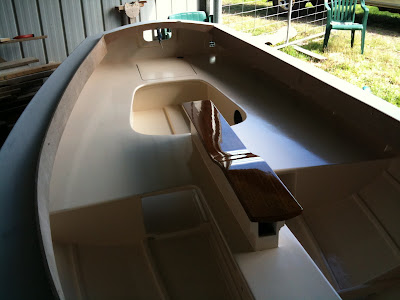
 Making a few cleats began with me using the tools that I've been working with on site, but it felt all clumsy and wrong-handed. Nasty, gritty, vibrating things didn't feel good in making such a humble and simple device, so I resorted much more comfortably to my little planes and then my violin making knives. What a difference! Silence and comfort at the bench.
Making a few cleats began with me using the tools that I've been working with on site, but it felt all clumsy and wrong-handed. Nasty, gritty, vibrating things didn't feel good in making such a humble and simple device, so I resorted much more comfortably to my little planes and then my violin making knives. What a difference! Silence and comfort at the bench.
The knife shown has a long taper and so it could be considered similar to a skew chisel, but with two bevels. The beauty of it is that it slices across a contour, so that instead of cutting down as with a chisel, you cut across, and as the blade gets wider, the cut progresses deeper into the work. Slicing slivers from hardwood is much easier than pairing it or cutting it across the grain. With this simple tool, cutting small radii is a pleasure.
The knife is simply a piece of German tool steel set into a pair of facing grooves in the handle stock before they were glued together. The blade can be removed for honing.
Incidentally, the navigator book is now available on Kindle from Amazon. I'll put a link on the book's blog page sometime...









